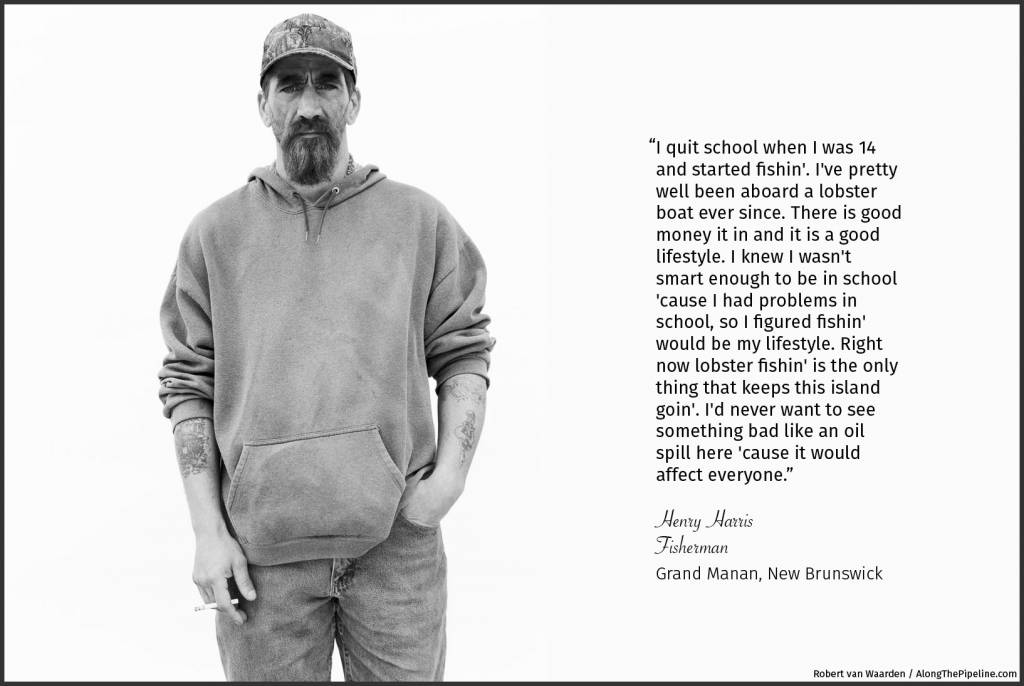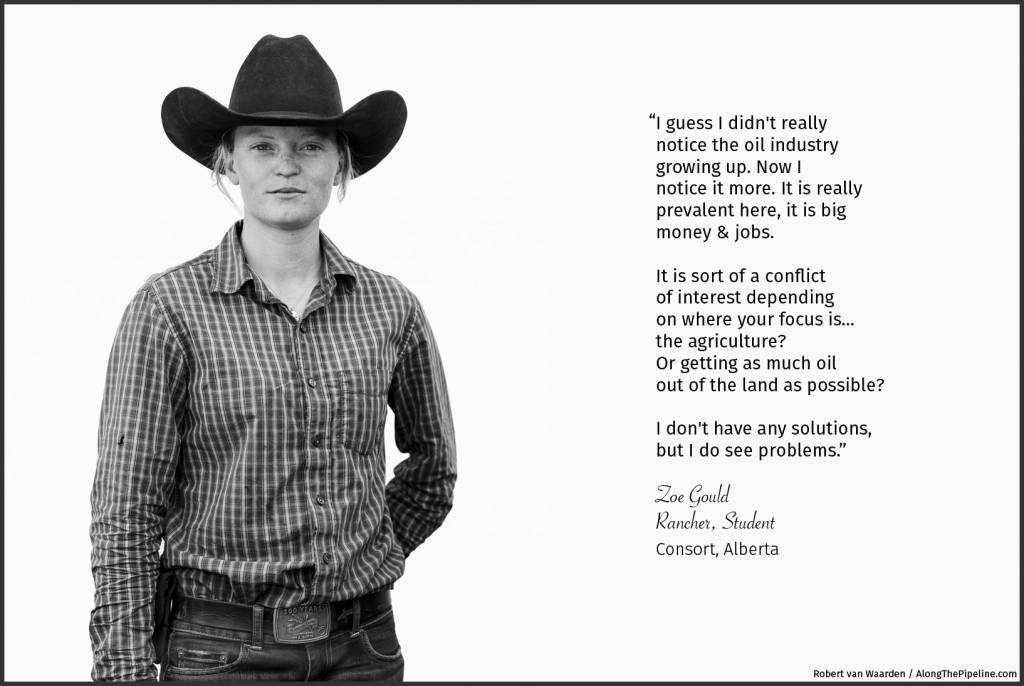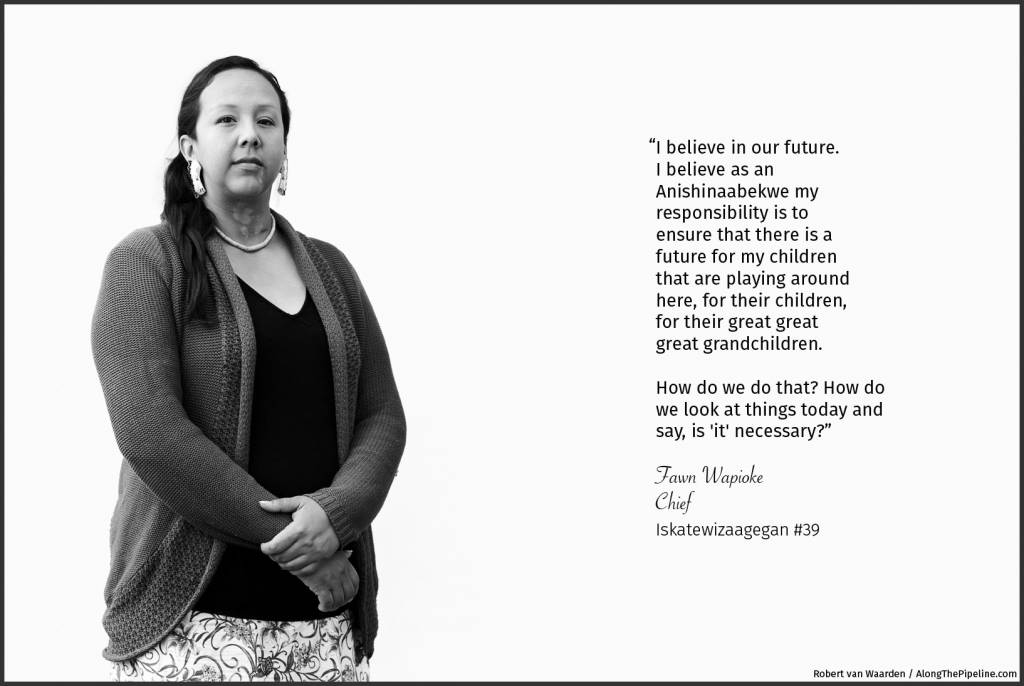A guest post written by photographer Robert van Waarden about his project Along the Pipeline
It was a typical Northern Ontario day on the shores of Shoal Lake when I really ‘got it’. I was about a month into a portrait photography project to highlight voices of people who live along the proposed Energy East pipeline route – and I was interviewing Chief Fawn Wapioke of Shoal Lake 39.
Fawn was talking about making decisions based on how they would affect future generations. Until this point in my journey, many individuals had shared similar sentiments, but the difference was Fawn’s two toddler twins, who were playing at our feet. Listening to those words and watching those kids, ‘it’ really sank in.
This was clearly about more than one pipeline. This was about building a different system – one where a clean environment and a sustainable economy provide a resilient system for future generations to thrive.
In this era of ‘pipeline politics’ we often hear from politicians, pundits and environmental groups, but not from the people most directly impacted: people who live or work along the route of an oil pipeline.
In the summer of 2014 I travelled the 4600km length of the newly-proposed Energy East pipeline across Canada. Using a 4×5 camera and black-and-white film, I created portraits of Canadians and First Nations who now find themselves caught in the polarizing world of tar sands expansion.
TransCanada’s Energy East pipeline, if built, would be the largest tar sands pipeline, and the longest pipeline of any sort in North America. The pipeline would carry crude oil and diluted bitumen from Alberta, across the prairies, through Ontario to Quebec, and all the way to export terminals in the Maritimes of Canada. It would cross hundreds of waterways, countless communities, vast tracts of farmland, drinking water supplies, First Nations territories, beluga whale habitat and iconic Canadian landmarks. It makes Keystone XL look small and if approved it would result in greenhouse gas emissions equal to 7 million new cars on the road.
On my journey I heard a lot of stories, a lot of opinions and drank a lot of cups of coffee. Everywhere I went along the pipeline, people gave me hours and days of their time. They opened their homes and shared their life stories. I discovered this isn’t a black-and-white issue. Every individual had their own opinions informed by their own experiences. From farmers, to First Nations, to fishermen, from mayors to ministers, everyone has their own opinion informed by their own experiences. Some people support the pipeline project, others oppose it, and some are still making up their minds. And everyone wants to know more.
It is clear that people are giving thought to the complex issues of energy, environment and economy. We are not all buying the line pushed by industry and the federal government that ‘we need this pipeline for jobs and the economy’. Most recognize the climate implications of a new mega-pipeline. In fact, every person I spoke with, whether they agreed with the pipeline proposal or not, talked about the need for Canada to move towards more renewable energy. This spring/summer an outdoor exhibit will be travelling across Canada, bringing these stories back to communities. If it comes to a town near you I encourage you to check it out. I promise it will make you consider not only the issue of the pipeline, but also that bigger question – what kind of world do we want to build?
Full Project at https://alongthepipeline.com/


